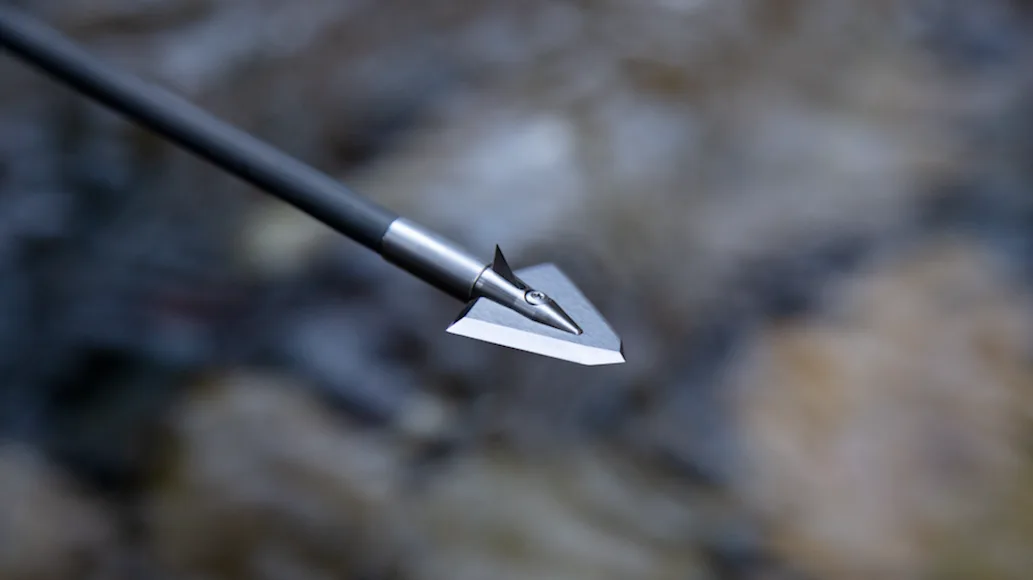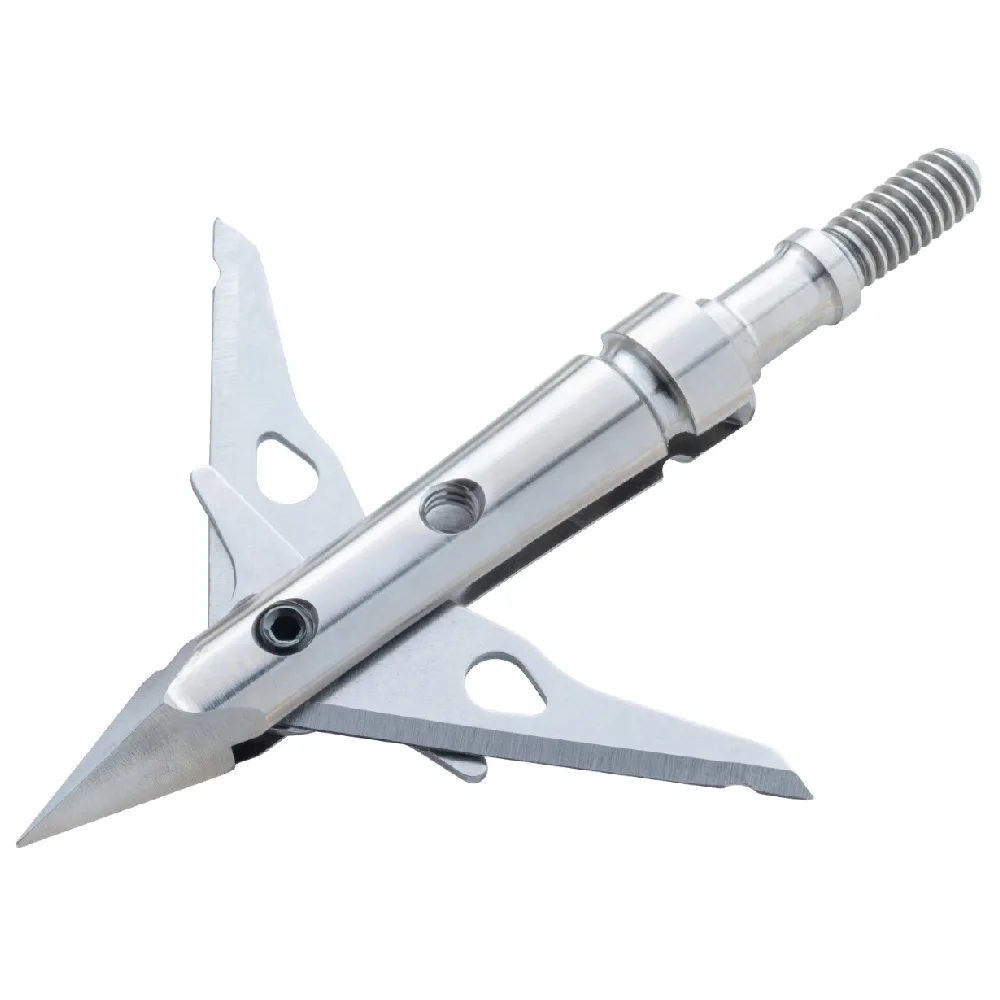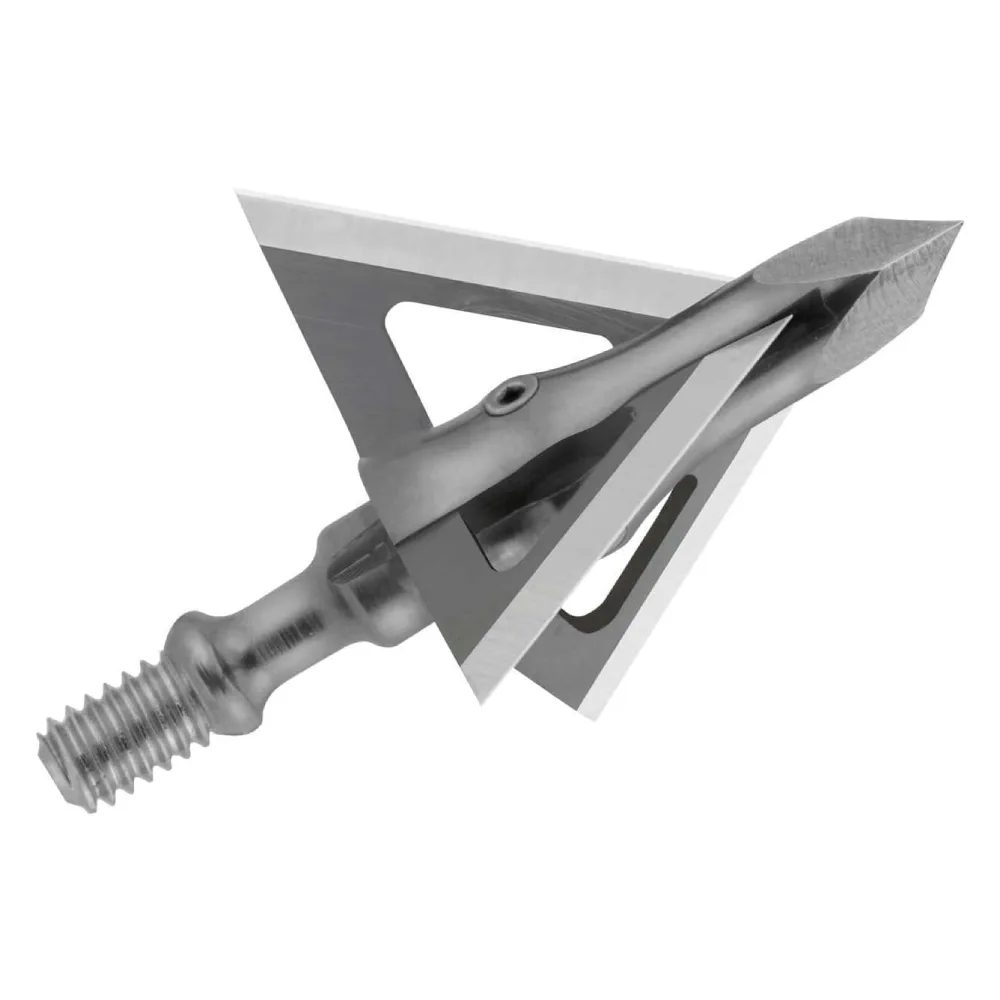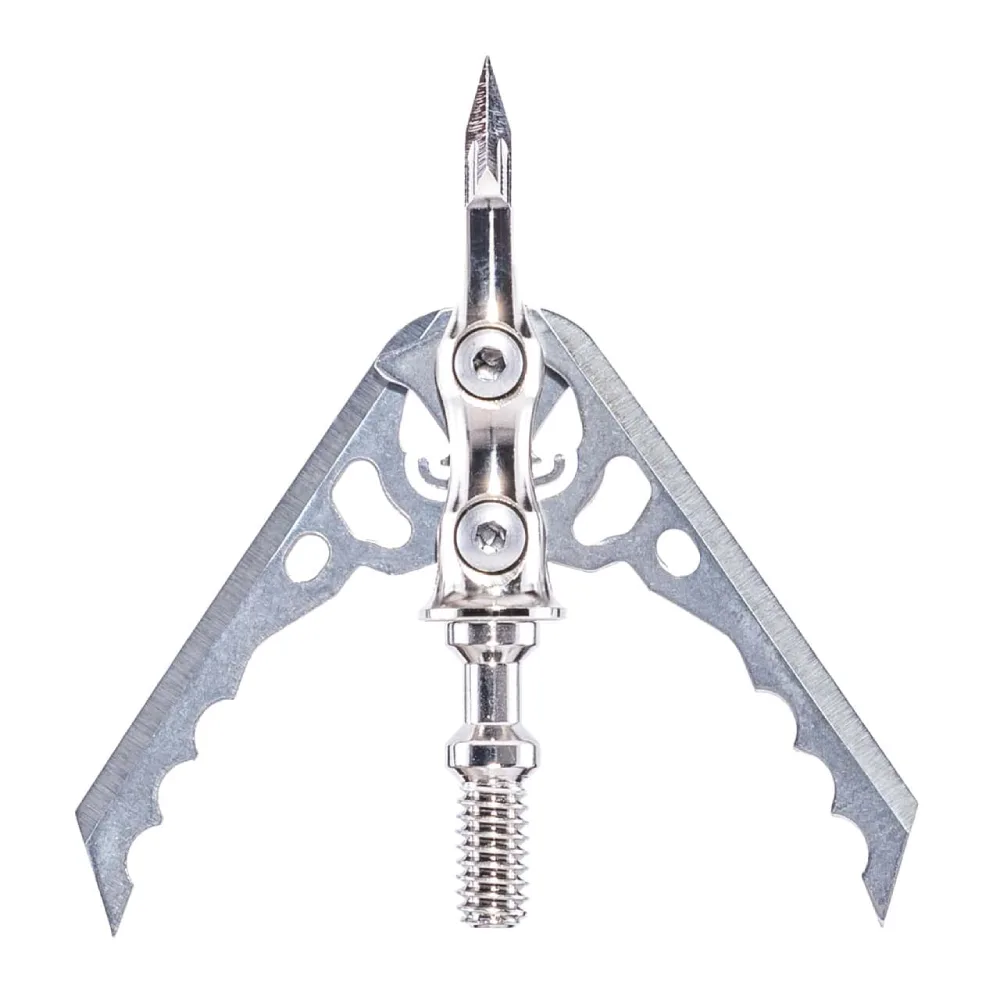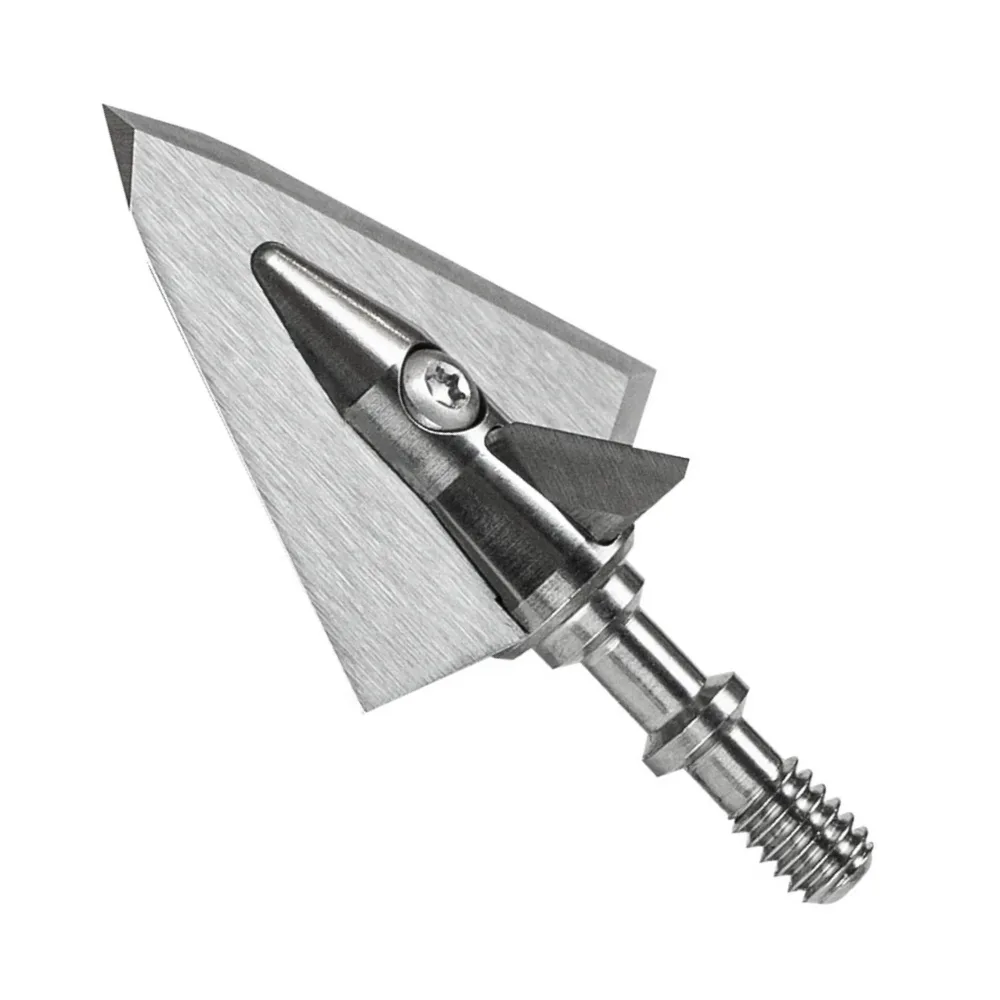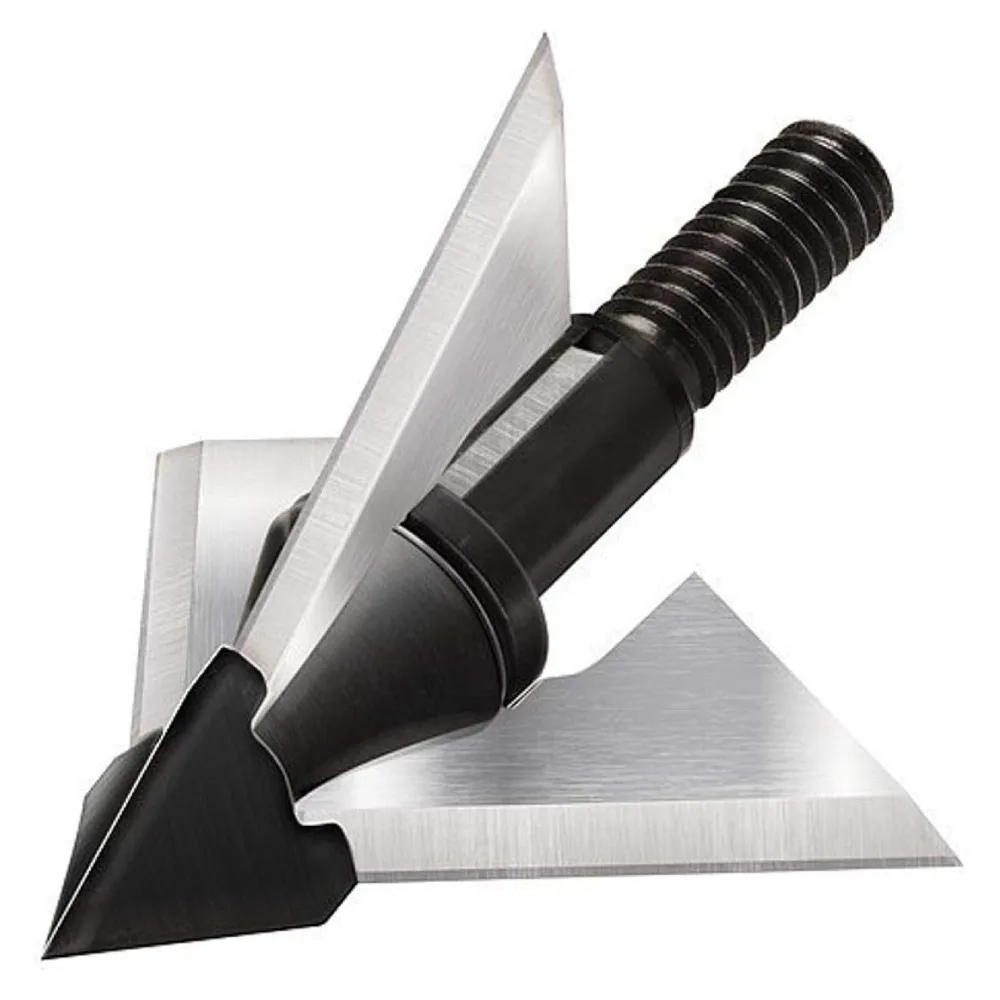If you want to open a can of worms, walk into an archery pro shop, sports show, etc., and start talking about broadheads. Add in the word "best" at any point in your conversation, and you'll need to brace yourself for some strong comments. Start talking about the best broadheads for harvesting North America's favorite game animal (the whitetail deer), and you'll wish that the can of worms you opened would quickly close.
Bowhunters have strong opinions concerning broadheads. After all, the business end of your carbon is critical to clean and quick kills. Still, many take the subject too far. For example, talk about the field-point precision and quiet flight of a top-end mechanical around a bowhunter fascinated by fixed blades, and you'll get eye rolls. On the flip side, preach deep penetration and fixed-blade durability to a mechanical geek, and you'll need to prepare for a scolding.
Frankly, we don't care what side of the deer broadhead fence you're on. Maybe you're a fixed-blade goer, a mechanical lover, or a bowhunter fascinated by hybrid heads. Or, possibly, you mix and match. The great broadhead debate will never be settled, but we got our hands on some of the top-performing broadheads on the market and put them through rigorous testing. Regarding the best broadheads for deer, you can put your trust in the to-come suggestions.
Best Overall: SEVR Titanium 1.5
Best Budget: Muzzy Trocar
Best Mechanical: Rage Hypodermic NC +P
Best Fixed Blade: Iron Will Single Bevel
Best For Crossbow: QAD Exodus Crossbow
Best Hybrid: Evolution Outdoors Hyde
Best Overall: SEVR Titanium 1.5
Specs
Cutting Diameter: 1.5 inches
Weight: 100 and 125 grain
Blade Thickness: .032 inches
Thread Pattern: 8-32 or Deep Six
Pros
Accurate
Quiet in flight
Deep penetrating
Comes with a practice feature
Cons
Sold individually for $16.99 per head
Tar and feather me, but I'm branding a mechanical broadhead with this award. This is not due to fancy marketing or the number of bowhunting celebrities backing it. Instead, I've yet to find a more accurate, lethal, or dependable broadhead. I have harvested nine whitetail bucks and four whitetail does with this head.
In addition to deer, I've harvested everything from bighorn sheep to elk to bear with this razor-sharp mechanical and have yet to be disappointed by it. The short, sleek, and streamlined ferrule with a needle-point sharp tip cuts through the air like butter to ensure maximum downrange accuracy. This broadhead won every accuracy test I conducted and flew ultra quietly in flight. (I put a premium on a quiet broadhead because animals hear the arrow in flight, not the bow string dropping.)
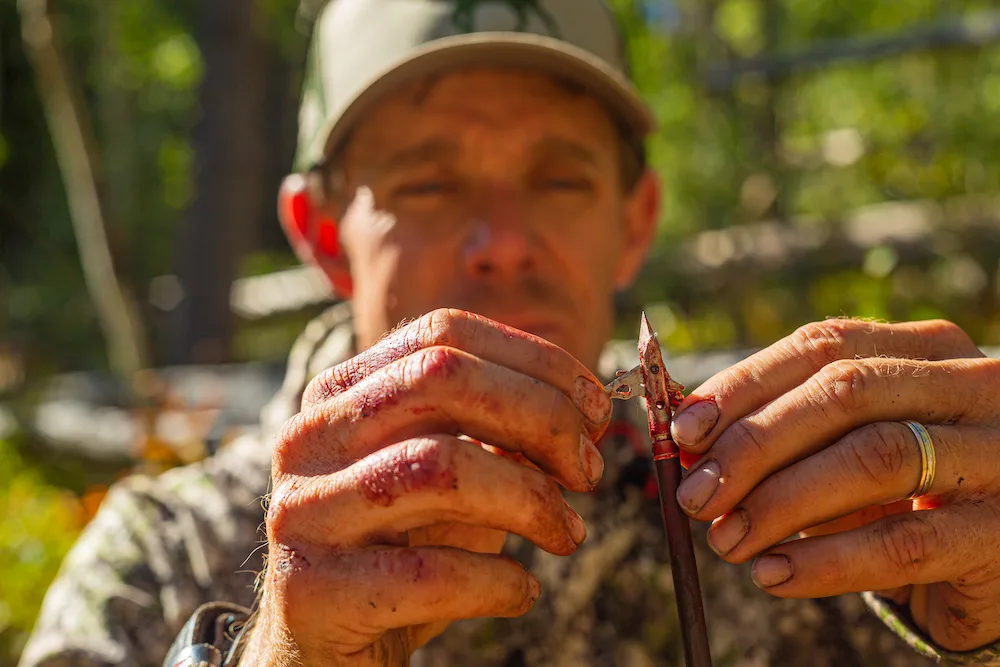
With a 1.5-inch cutting diameter, the .032-inch thick blades stay contained in the ferrule until impact. They then lock in place and pivot around the bone to keep the arrow driving through the animal. My most extended shots on big game animals with this broadhead were a 61.5-yard Rocky Mountain Big Horn sheep and a 63-yard bull elk. The sheep was broadside, and the arrow blew through. The elk was quartering to me, and the broadhead went in behind the front shoulder, passed through a belly full of grass, and poked out the opposite flank. Both animals traveled less than 30 yards before expiring.
My favorite feature of the Titanium 1.5 is the Practice Lock. Each Sevr broadhead comes with a second hole in the ferrule and a set screw that can be added to lock the blades in place. Add the set screw during practice sessions, and remove it when you're ready to hunt.
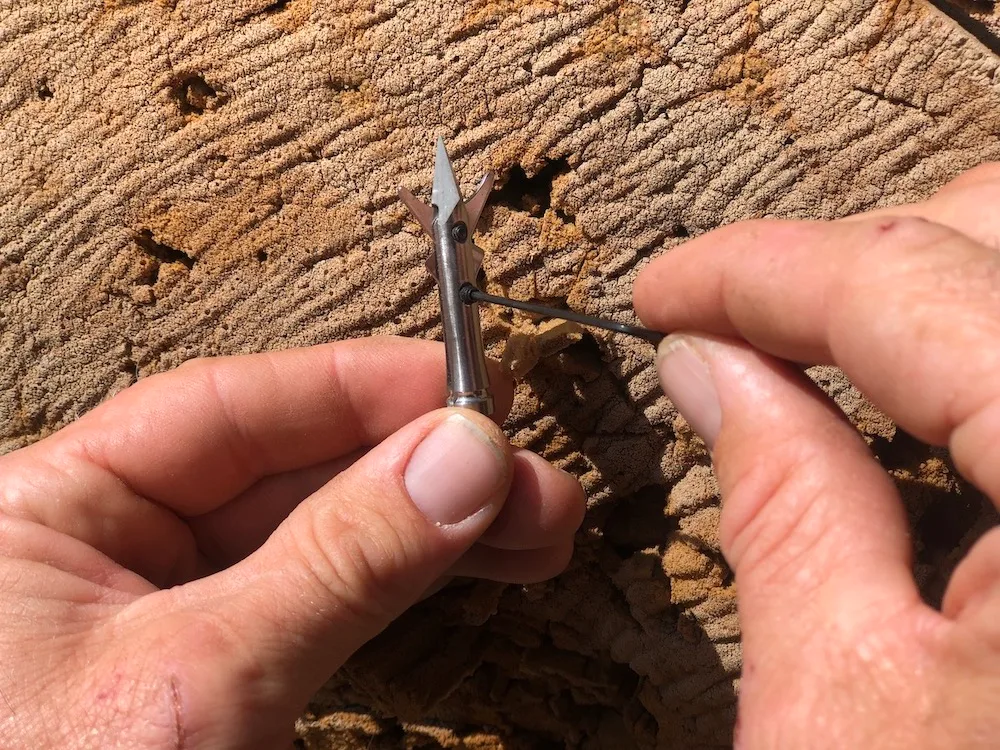
Best Budget: Muzzy Trocar
Specs
Cutting Diameter: 1-3/16 inches
Weight: 100 grains
Blade Thickness: .035 inches
Thread Pattern: 8-32
Pros
Accurate
Durable
Scary sharp
Economical
Cons
Only comes in a 100-grain option
Vented blades produce noise
It's hard to believe this 3-pack falls under the $40 mark. Not only is this one of the most accurate fixed-blade broadheads I've ever tested, but it cuts like crazy and penetrates deep. If you're looking for a fixed-blade whitetail wrecker, the Muzzy Trocar is a top-end option with a low-end price tag.
A few years back, before Idaho legalized mechanical broadheads, I toted a quiver full of Trocars to the state's far northern region. Three days later, I slipped this sleek, one-piece ferrule head with a right offset blade design through the lungs of a gorgeous chocolate-phase black bear. The bear didn't go 20 yards before I heard the death moan. I know this is a deer broadhead article, but I want to give some added perspective. With this head, I've killed three whitetail bucks, and it's proven its salt.
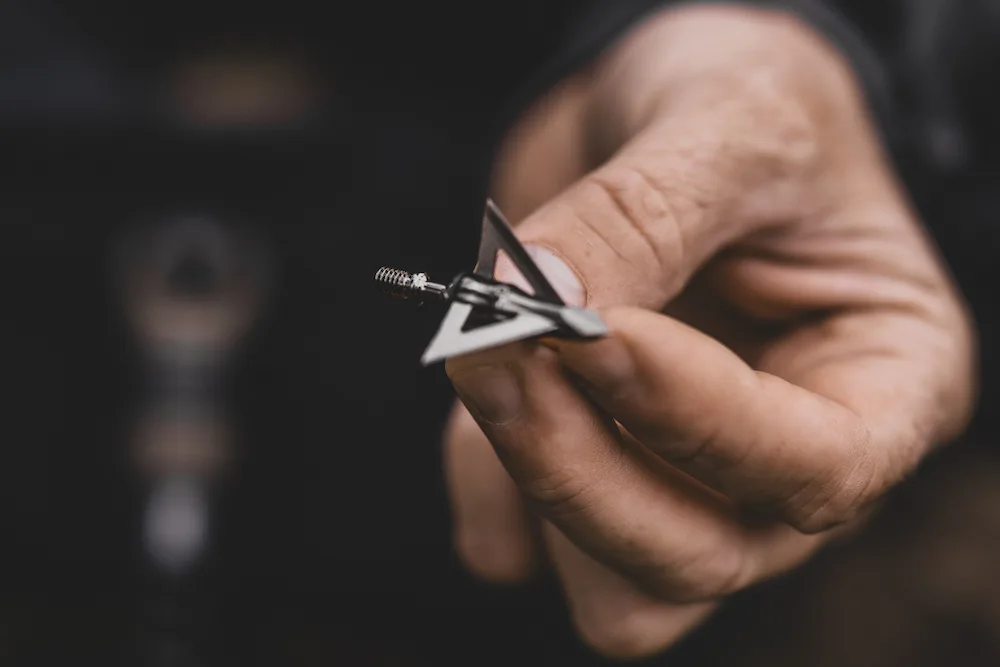
Several factors make the Trocar a winner. First, the .035-inch blades are tough and wicked sharp. I love the solid steel ferrule with bone-busting Trocar Tip. The head is also remarkably accurate. I've shot this fixed-blade head-to-head against several other fixed-blade builds, and out to the tested distance of 80 yards, it produced the best three-shot groups and hit close to my field points at this distance.
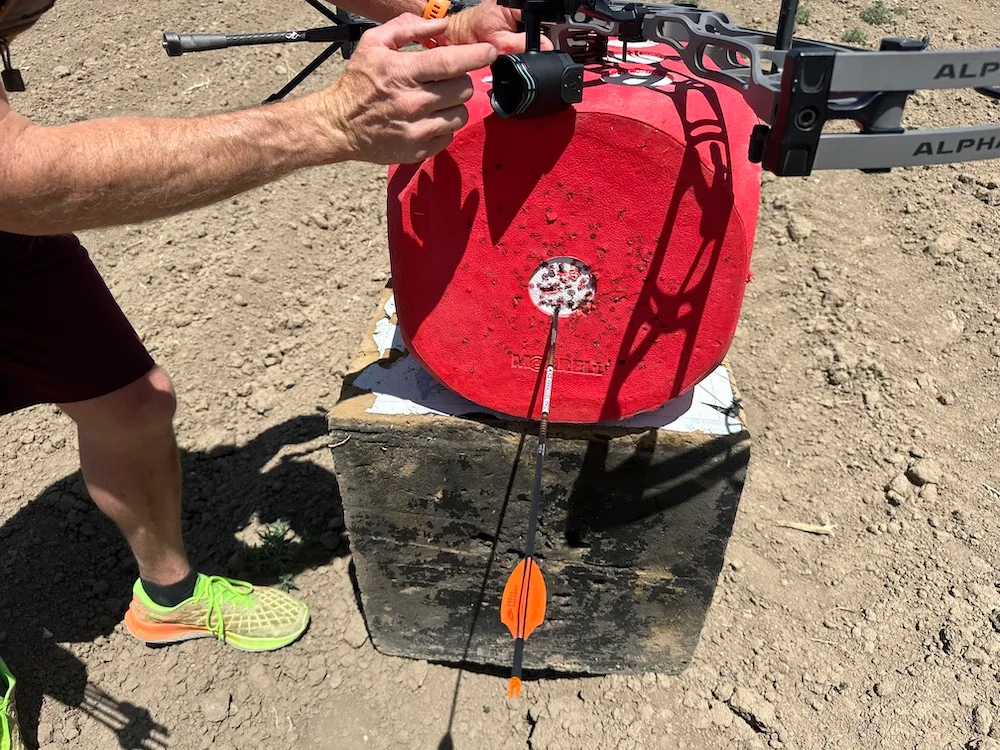
Though the cutting diameter isn't much over an inch, this head carves an exceptional wound channel, and if shot placement is good, the blood trails are solid. The head's short, compact design combined with a right offset blade makes it an excellent fixed-blade choice and no-brainer at its price point.
Best Mechanical: Rage Hypodermic NC +P
Specs
Cutting Diameter: 1.75 inches
Weight: 100 and 125 grains
Blade Thickness: .035 inches
Thread Pattern: 8-32
Pros
Large cutting diameter
Accurate
No blade collar needed
Excellent for lower poundage archers
Cons
Not very durable
Not many seasons go by where a Rage broadhead doesn't find its way into my quiver. While I've harvested an elk and one large black bear with Rage heads, they tend to be my whitetail go-to. My favorite is the Hypodermic NC +P. While this futuristic-looking, two-blade mechanical gives up a 1/4-inch cutting diameter to its 2-inch cut sibling—the Hypodermic +P—I prefer this mechanical's increased penetration.
The broadhead's killing power is partly due to the narrow, streamlined ferrule with a hybrid tip, which tracks perfectly behind the large swath carved by the pair of .035-inch thick blades. The blades also feature a swept-back design to ensure maximum penetration.
The blood trails this head produces are remarkable. Though it's not as spot-on accurate as SEVR's 1.5 beyond 70 yards, I still slug it as an accurate broadhead that hits with field points when fired from a well-tuned bow to 70 yards. At 80 yards, my three-shot groups widened but were all still firmly in the kill zone on a lesser-sized Delta McKenzie deer target.
Best Fixed Blade: Iron Will Single Bevel
Specs
Cutting Diameter: 1-1/6 inches with 3/4-inch bleeder
Weight: 100 to 200 grains
Blade Thickness: .062 inches
Thread Pattern: 8-32 and Deep Six
Pros
Ultra durable
Accurate
Quiet in flight
Easy to resharpen
Maximum penetration
Cons
Price
It took me a while to join the Iron Will camp. Their fixed-blade broadheads are incredibly pricy; however, you can't top the Single Bevel if you're a fan of fixed blade. The Single Bevel heads are engineered to maintain the arrow's rotational spin throughout impact. Because Iron Will lets you match the rotation (right or left) to your fletch orientation, accuracy is boosted.
This is the most accurate fixed-blade broadhead I've ever shot, and it's very durable. The low-profile design ensures maximum accuracy, and the non-vented blades ensure quiet flight. The single-bevel bleeder blade is optional, but I highly recommend it. The bleeder blade increases arrow rotation, which better stabilizes arrow flight.
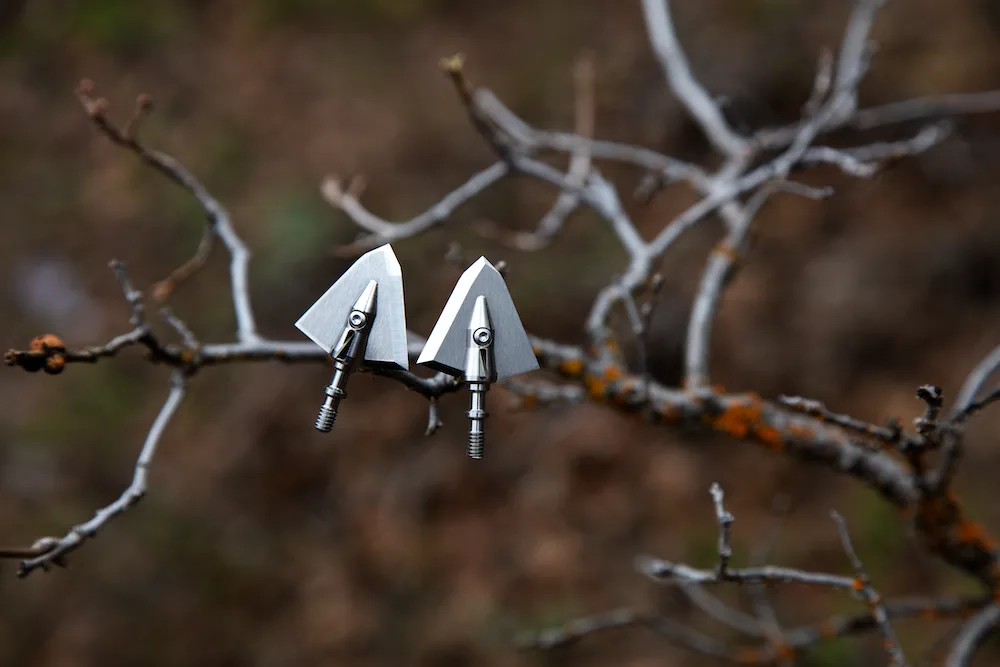
Something else I love about this broadhead is the Snyder Core Variant. I shoot micro-diameter arrows, specifically Easton's 4MM Axis Long Range and X10 Parallel Pros. Because the Snyder Core Variant allows the ferrule to sit deeper into my shafts, the impact strength is boosted.
Best For Crossbow: QAD Exodus Crossbow
Specs
Cutting Diameter: 1.25 inches
Weight: 100 and 125 grains
Blade Thickness: .040 inches
Thread Pattern: 8-32 with 22/64 washer
Pros
Two blade options
Quiet in flight
Compact design for increased accuracy
Blades set at a steep cutting angle
Cons
They eat up a foam target quickly
I don't hunt much with a crossbow, but if I did, a bolt tipped with a Quality Archery Designs Exodus would rest in the rail of my TenPoint. I tested the QAD Exodus Crossbow broadhead out to 100 yards and achieved remarkable accuracy.
I credit the accuracy to the ferrule's field-point-like length and the razor-sharp blades coming back over it to create better aerodynamics. This head flies like a champ, and the non-vented blades keep it quiet in flight. The SST material blades are incredibly durable and sharp. I also cheer the steep cutting angle, which creates larger entrance and exit wounds and allows for increased broadhead penetration.

QAD offers two styles of blades, full and swept (I like the full) and Precision Spin technology means rotation starts the second the bolt clears the rail to ensure maximum downrange arrow performance. Though I haven't run a QAD Exodus Crossbow head through a deer, I have shot several whitetails with the standard QAD Exodus, which mirrors the specs of the crossbow, and I am impressed with the penetration and durability of this three-blade broadhead.

Best Hybrid: Evolution Outdoors Hyde
Specs
Cutting Diameter: 2 inches
Weight: 100, 125, and 150 grains
Blade Thickness: .060-inch front blade; .030-inch mechanical blades
Thread Pattern: 8-32
Pros
Fixed blade and mechanical all in one
Highly accurate
Quiet
Patented blade-locking technology
Multiple ferrule options
Cons
I don't have one
After shooting this hybrid-style broadhead from as close as 10 yards to as far as 100 yards, it will line my quiver a time or two this fall during my whitetail pursuits. I was impressed when the fixed-blade head of the Hyde cut a fletching off my field-point-tipped arrow at 60 yards. But I was even more impressed when I shot a field-point arrow followed by a Hyde-tipped arrow at 90 yards, and the arrows were both in the 10-ring of a lesser-sized 3-D deer target. This broadhead gets an A+ in the accuracy department.
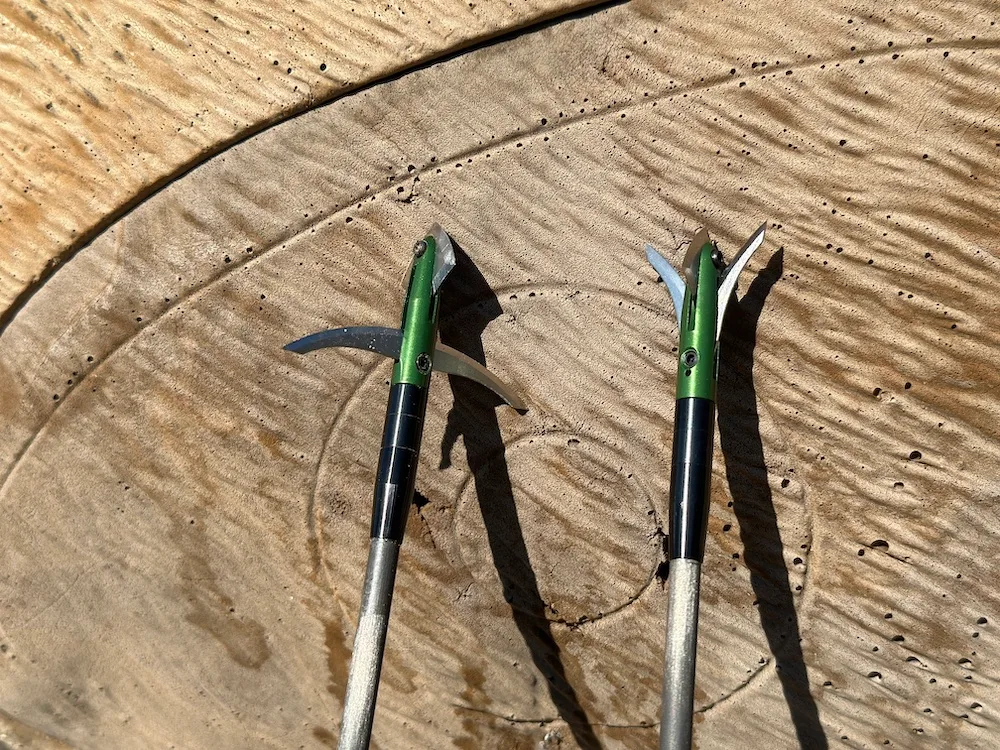
The fixed front two-blade promises immediate cutting action. As the fixed-blade front starts cutting, a pair of front-deploy mechanical blades spring to life to create a 2-inch cutting diameter. All the blades are sharp, and though I've yet to shoot this broadhead into a deer, it blew through a piece of 1/4-inch thick plywood at 80 yards and seemed reasonably quiet in flight.
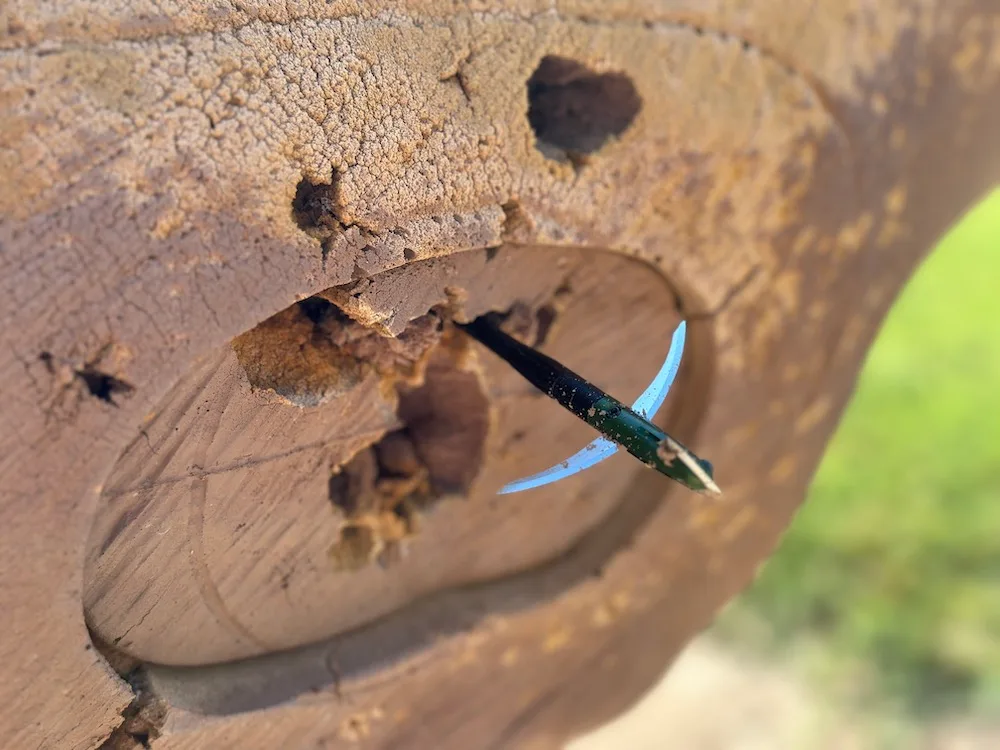
Evolution Outdoors provides a free practice head with each six-pack purchase, and the practice head hits right with the real thing. Included Allen wrenches and set screws make blades a breeze to swap.
How We Tested Broadheads
Broadheads are challenging to test. Not because they are too technical or have features that are hard to explain to bowhunters, but because the ultimate test of any broadhead is how that broadhead performs on deer. The good news is of the five deer broadheads I tested; I've killed deer with three of them. I plan to hunt with the ones I haven't this fall and add my findings to this story later on.
For the on-the-range portion of this broadhead test, we tested all broadheads for spin, accuracy, dependability, in-flight noise, and penetration.
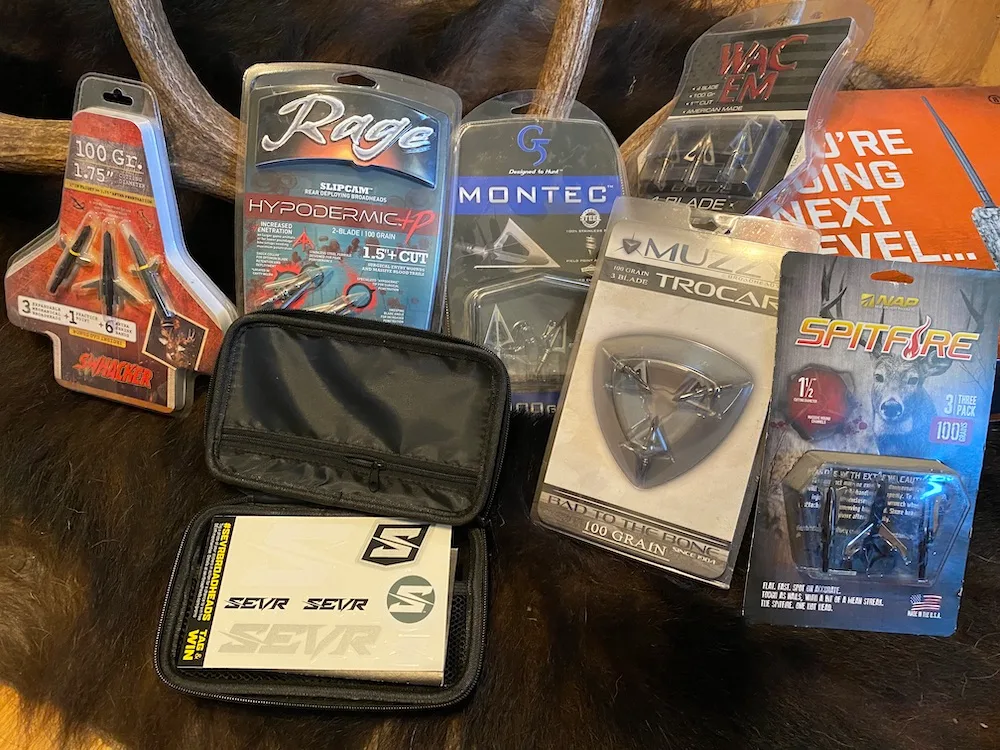
Spin
We screwed each 100-grain 8/32-thread broadhead into an Easton Half-Out insert. We then conducted a spin test using a Pine Ridge Archery Arrow Inspector.
Accuracy
We fired each broadhead from the same compound bow, Hoyt's new-for-2024 Alpha X 33, set at a draw length of 28 3/4 inches and a draw weight of 68 pounds. I used multiple arrows during the test. I wanted to see how each broadhead performed with micro-diameter and standard arrows. We tested each 100-grain broadhead at distances between 10 and 100 yards in various wind conditions with all arrows. Speed tests were also conducted with three- and four-fletch arrows. We tested the crossbow broadhead using Wicked Ridge's RDX 410 crossbow at the same distances.
Dependability
We shot all broadheads through 1/4-inch plywood at 20, 40, and 80 yards.
In Flight Noise
Over two weeks, I shot each head past a high-definition microphone at 20, 40, 60, and 80 yards.
Penetration
Penetration is the most challenging test to conduct. I have penetration results for the broadheads I've harvested deer with. The broadheads I've shot deer with and those I haven't were shot into a never-been-shot Morrel High Roller foam target at 20, 40, and 80 yards. We measured penetration using a tape measure.
What To Look For In A Deer Broadhead
Don't overcomplicate finding your deer broadhead. I've watched consumers stand in broadhead aisles at box stores and pro shops and have an anxiety attack. Like most modern day archery gear, broadhead performance has come a long way, and if you do your job and put the head where it's supposed to go, it won't let you down.
All styles of broadheads (fixed, mechanical, hybrid) perform well on deer. Because deer are medium-sized game, I prefer a minimum cutting diameter of 1.5 inches. However, I have killed deer with fixed-blade heads with a total cut diameter of less than 1 inch. The most critical piece of choosing your deer broadhead is having ultimate downrange confidence in your broadhead. If you're shooting an accurate head with sharp blades that perform well on the range, you should put that broadhead in your quiver.
Final Thoughts
Deer season is here! No matter what broadhead you choose, you must practice with the one you plan to hunt with. Don't take my or the manufacturer's word for a broadhead's field-point-like accuracy. Get on the range and prove it to yourself.
Why Trust Us
For more than 125 years, Field & Stream has been providing readers with honest and authentic coverage of outdoor gear. Our writers and editors eat, sleep, and breathe the outdoors, and that passion comes through in our product reviews. You can count on F&S to keep you up to date on the best new gear. And when we write about a product—whether it’s a bass lure or a backpack—we cover the good and the bad, so you know exactly what to expect before you decide to make a purchase.

